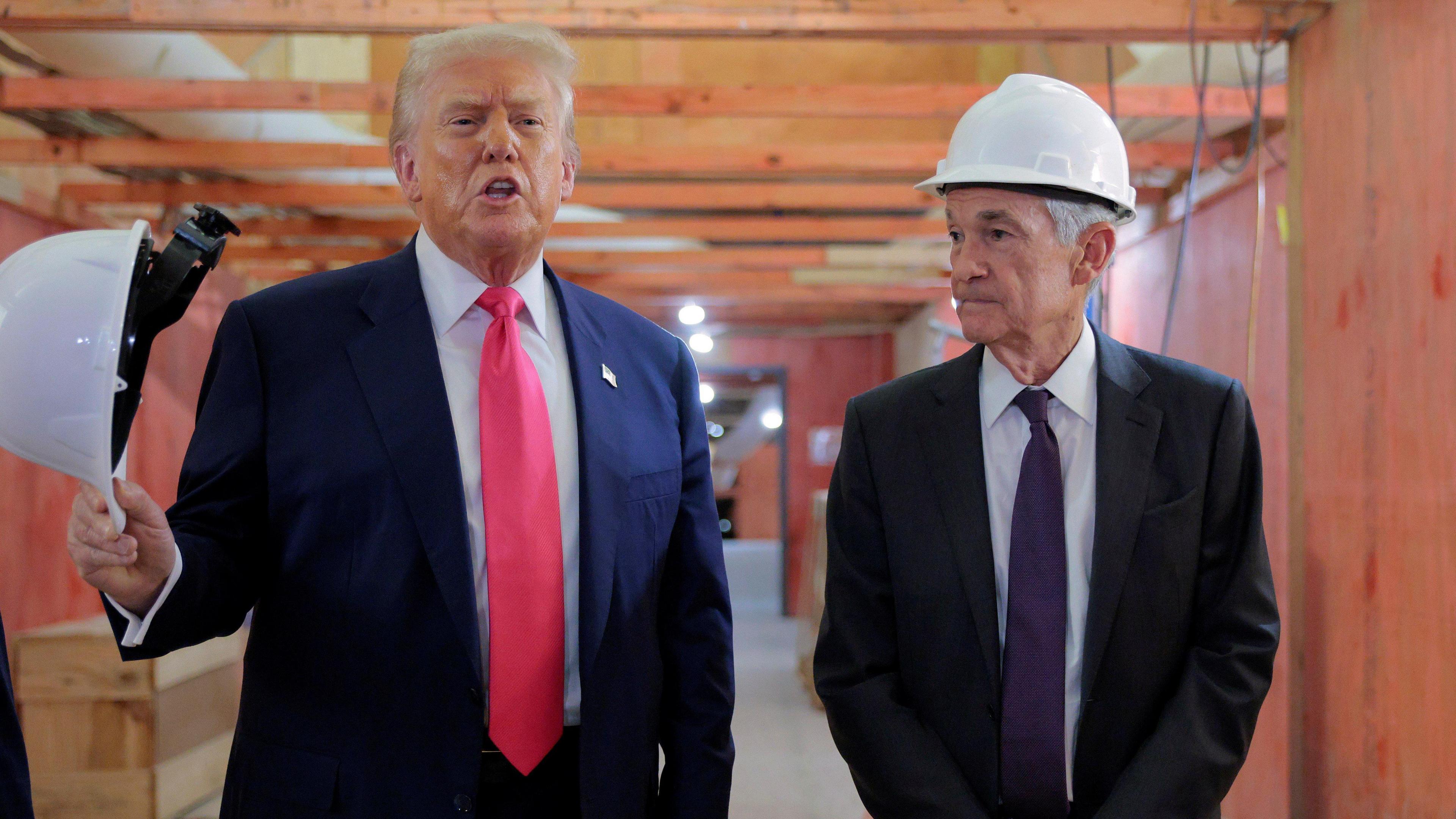Fed holds interest rates steady despite Trump pressure
Watch: What to know about US interest rates staying steady
- Published
The US central bank has kept interest rates unchanged again, despite pressure from President Donald Trump to lower borrowing costs.
The decision, which was widely expected, left the Federal Reserve's key lending rate between 4.25% and 4.5%, where it has stood since December.
But in an unusual dissent, two members of the board voted against the plan, saying they preferred to cut, which is a sign that support for lower rates may be broadening.
The vote came as new economic data continued to fuel debate over what effects Trump's tariffs will have on the world's largest economy.

The latest figures showed the US economy grew at an annual rate of 3% over the April-June period, after shrinking in the first three months of the year, the Commerce Department said.
But the bigger-than-expected rebound was driven primarily by a sharp drop in imports as Trump's tariffs kicked in.
"Forget about the headline number," Jim Thorne, chief market strategist for Wellington-Altus Private Wealth told the BBC's Opening Bell. "The underlying data is suggesting an economy that is losing momentum."
The Fed typically lowers interest rates when the economy is struggling and raises them if the pace of price rises starts increasing too quickly.
Policymakers at the Fed have long indicated that they expected to lower borrowing costs at some point this year, following in the footsteps of other central banks, including in the UK, which have cut interest rates.
But they have held off far longer than once anticipated, worried about how tariffs and other new policies, including tax cuts, will affect the economy.
Inflation, the pace of price increases, also remains above the Fed's 2% target, ticking up to 2.7% in June.

Wednesday's decision marked the first time in more than 30 years that two Fed policymakers have voted against the majority.
Federal Reserve chair Jerome Powell has argued that moving cautiously makes sense at a time when the job market remains stable and tariffs are widely expected to drive up prices.
But there are risks to delay, since tariffs also often slow growth, hitting sales and investment.
In announcing its decision, the Fed nodded to the growth figures, noting that growth had "moderated" in the first half of the year, despite swings in trade affecting the data.
At a press conference after the decision, Mr Powell offered few clues as to whether a rate cut might come in September, as financial markets increasingly expect, saying he saw little evidence that interest rates were holding back the economy "inappropriately".
He also maintained that there was "a long way to go" before the full impact of the tariffs becomes clear.
Andrew Hollenhorst, chief US economist at Citi, said policymakers would be watching closely for signs of damage to the job market, where the unemployment rate remains low at 4.1% but job creation has weakened.
"The danger of waiting is, you wait too long and the cracks you're seeing in the labour market actually become more concerning," he said.
What tariffs has Trump announced and why?
- Published5 November
What have tariffs really done to the US economy?
- Published4 July
Tariffs prompt record plunge in US imports
- Published5 June
Trump has dismissed concerns that his tariffs might drive up prices or weigh on growth.
He has also attacked the Fed for moving too slowly to lower borrowing costs, focusing his argument on the way lower interest rates would save the government money on debt payments and boost the housing market.
In his push for rate cuts, Trump has toyed with the idea of firing Powell, though he has said most recently that he did not think such a step - a major break with precedent - would be necessary.
"It may be a little too late as the expression goes, but I believe he's going to do the right thing," he told reporters last week after touring a Fed construction project the White House has accused Powell of mismanaging.
On Wednesday, after the Commerce Department's report on gross domestic product (GDP), he repeated his call for lower rates, addressing Fed chairman Jerome Powell, whom he has nicknamed Mr Too Late.
"WAY BETTER THAN EXPECTED!" he wrote on social media. "'Too Late' MUST NOW LOWER THE RATE. No Inflation! Let people buy, and refinance, their homes!"
Powell defended the Fed's role in the housing market, noting that it does not set mortgage rates and pointed to other factors - including US government borrowing costs - shaping those rates.